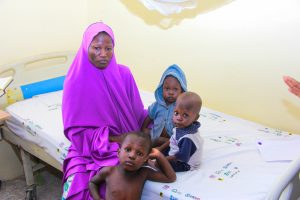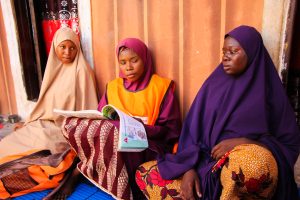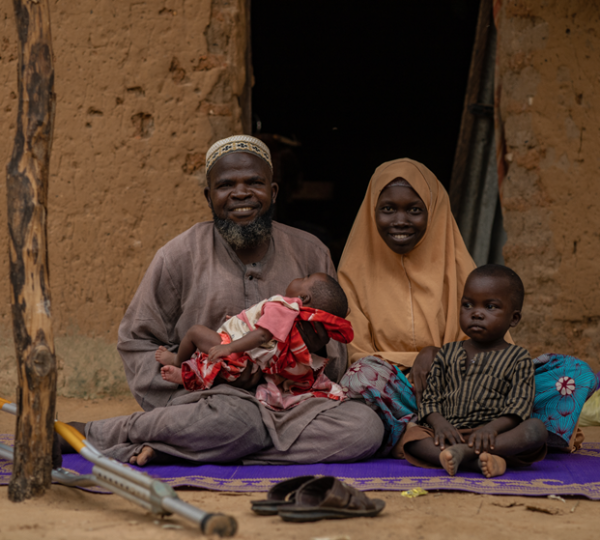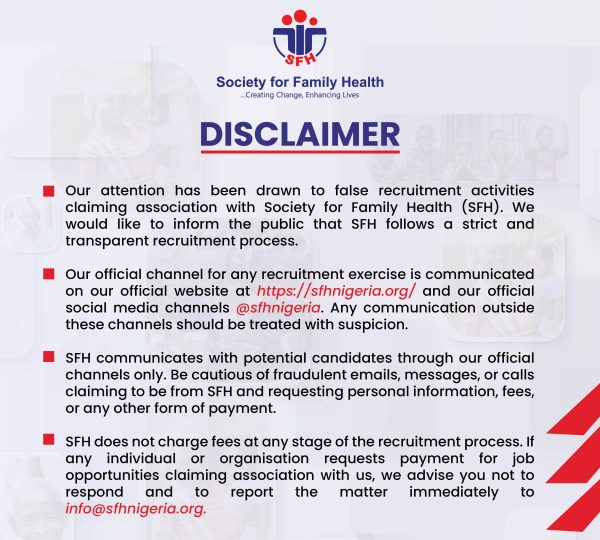What is Malnutrition and How Can We Solve It?
By Elizabeth Adeyemo
Without proper nutrition, especially in the first 1000 days of a person’s life, physical and cognitive development can suffer, resulting in lifelong problems.
Malnutrition threatens the growth, survival and development of children, adolescents and young people, economies and nations. It can also increase the risk of disease and death.
Globally, about 45% of deaths among children under 5 are associated with undernutrition, with most of these deaths occurring in low- and middle-income countries. Severe acute malnutrition (SAM) affects an estimated 2 million children in Nigeria, yet only two out of every ten of these children are currently receiving treatment. One in every five children in northeast Nigeria is severely malnourished.
What is Malnutrition?
Malnutrition results from getting too little or too much of certain nutrients. It is a multifaceted issue that takes on many forms, classified into three broad groups by the World Health Organization:
- Undernutrition
- Micronutrient-related malnutrition
- Overweight, obesity, and diet-related non-communicable diseases
Undernutrition
Undernutrition results from the intake of inadequate nutrients. It includes wasting, stunting, and being underweight.
Wasting or acute malnutrition is when a person has a low weight for their height. It occurs when they haven’t had enough food to eat and/or have had an infectious disease, such as diarrhoea, making them lose weight. Acute malnutrition comes in varying degrees of severity, including moderate acute malnutrition (MAM) and severe acute malnutrition (SAM).
Stunting or chronic malnutrition occurs when a person has a low height for their age. It is usually linked to low socioeconomic status, poor maternal and child health and nutrition, recurring illness, and poor hygiene and sanitary conditions. Chronic malnutrition can result in cognitive damage, permanently affecting a child’s ability to learn.
Children with wasting or stunting are at an 11 times higher risk of dying than a healthy child. Wasting and stunting make it harder for children to fight off and recover from common illnesses like diarrhoea or measles.
Micronutrient-related malnutrition
Micronutrients are required by the body for proper growth and development. When the body doesn’t take up adequate vitamins or minerals, such as iodine, iron and vitamin A, micronutrient deficiencies result.
Overweight and obesity
Overweight and obesity result when a person consumes too much and expends too little, making them too heavy for their height.
Diet-related noncommunicable diseases
Diet-related noncommunicable diseases include cardiovascular diseases (e.g. heart disease and stroke), diabetes, and certain cancers, and are often associated with unhealthy diets and poor nutrition.
What causes Malnutrition?
Malnutrition is more than about the lack of food; it’s a combination of several factors, such as:
Poverty
Malnutrition and poverty are mutually reinforcing, resulting in a vicious cycle. Poverty perpetuates malnutrition because when people do not have the means to afford nutrient-rich food, they suffer. Likewise, malnutrition has the potential to impede productivity and economic development.
Conflict
For 13 years, the northeast region of Nigeria has been experiencing conflict. This has resulted in displacements of households, leading to disruption in their source of livelihood and severe food shortages.
Disease
Preventable illnesses such as malaria, pneumonia, and diarrhoea increase the risks of malnutrition.
Poor water, sanitation and hygiene (WASH) conditions
For children to survive and develop properly, they need access to portable water, basic sanitation facilities and good hygiene practices. When these basic amenities are unavailable, children are at a higher risk of developing WASH-related illnesses, which can contribute to malnutrition.
Cultural practices
Certain cultural norms and practices influence what a mother gives her child. Some mothers believe that the first milk produced after delivery, colostrum, shouldn’t be given to their baby, so they discard it. A misconception, as the colostrum is nutrient-rich milk that plays an important role in strengthening the baby’s immune system. Some mothers also believe that babies should take water with the breastmilk and thus don’t practice exclusive breastfeeding. Furthermore, some believe that breastfeeding mothers who become pregnant must stop breastfeeding their babies because their breast milk at that time is contaminated and will cause their babies to either die or become ill.
How SFH is addressing malnutrition in Northeast Nigeria
Society for Family Health, through the Health Resilience of the Northeast (HeRoN) project, is working to tackle malnutrition in Borno and Yobe states.
The HeRoN project works to ensure that communities in these two states have access to quality primary healthcare and nutrition services while also contributing to the sustained capacity of health systems strengthening at the LGA and health facility level.
Stabilization centre
SFH HeRoN re-activated and currently runs a stabilization centre in Borno state for children with severe acute malnutrition. After this condition is identified at a health facility or by one of the Community Health Influencers Promoters and Services (CHIPS) agents/community volunteers, they are referred to the stabilization centre for treatment. Based on the condition and responsiveness to treatment, mothers and children with severe acute malnutrition and associated medical complications can be admitted for up to 3 weeks. During this period, healthcare services and feeding are provided for free for both the child and the mother.
Between June 2021 and October 2022, 248 children with SAM were admitted to the stabilization centre, and 223 were discharged.

Health Facility Strengthening
SFH HeRoN supports several health facilities in Borno state and Yobe. SFH HeRoN reactivated and strengthened the LGA Logistic Management Coordinating Unit to improve efficient and effective supply chain management of essential drugs and commodities at the health facility level. Furthermore, SFH HeRoN strengthened the capacity of the state LGA and health facility to deliver key Primary Health Care (PHC) interventions.
Capacity building and community empowerment
SFH HeRoN is strengthening the capacity of the local community and health facilities to identify and prevent malnutrition in children.

SFH HeRoN selected CHIPS agents using the nationally recommended criteria and built their capacity to provide reproductive, maternal, neonatal and child health (RMNCH) information and services. These CHIPS agents counsel mothers on infant and young child feeding, including exclusive breastfeeding and complementary feeding, and teach them how to use MUAC tapes to screen their children for malnutrition. Each CHIPS agent is assigned to communities and reaches at least 100 households with these essential messages and services.
Between January and August 2022, CHIPS agents screened 50,390 children using a MUAC tape and referred 3071 children with MAM and 789 children with SAM to the nearest primary health facilities to receive Integrated Management of Acute Malnutrition.
SFH continues to provide life-saving support and promote access to quality reproductive, maternal, neonatal, and child health care to vulnerable populations in conflict-affected areas.
For more information, write info@sfhnigeria.org




